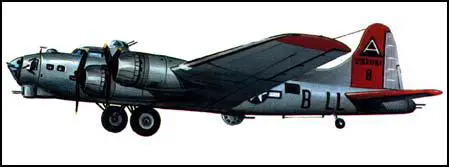B-17 Flying Fortress
In August, 1934 the Boeing Aircraft Company began work on producing a multi-engined bomber for the United States Air Force. The specifications provided by the USAF included an aircraft that could carry 2,000 pounds of bombs a distance of 2,000 miles at speeds of 240 mph.
The B-17 Flying Fortress flew for the first time on 28th July, 1935. The aircraft, with its nine man crew, had a maximum speed of 317 mph (510 km) and had a range of 3,000 miles (4,800 km). It was 73 ft 10 in (9.83 m) long with a wingspan of 103 ft (31.62 m). The aircraft was armed with 10 machine-guns and could carry 17,600 lb (7.985 kg) of bombs.
When the B-17 entered service in June, 1939, it was the most advanced bomber in the world. On 17th August, 1942, it began making its first bombing raids in Europe. Whereas the Avro Lancaster and Handley Page Halifax concentrated on night raids on Nazi Germany the B-17 took responsibility for the daylight bombing campaign.
The B-17 was constantly improved during the Second World War. The entire rear section was radically altered to provide greater stability at high altitude. The armament was increased and included two mechanically operated gun turrets. The B-17G version had an increased range of 3,400 miles (5,200 km) and carried a crew of ten.
A total of 12,731 B-17s were produced during the war. The Royal Air Force received over 200 of these and was used by Bomber Command over Germany.

